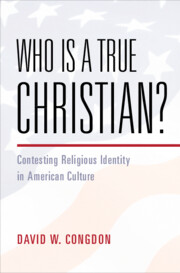Refine search
Actions for selected content:
33 results
Chapter 18 - Episodic Emotional Memory
- from Section IV - Emotional Learning and Memory
-
-
- Book:
- The Cambridge Handbook of Human Affective Neuroscience
- Published online:
- 16 September 2025
- Print publication:
- 02 October 2025, pp 363-382
-
- Chapter
- Export citation
5 - Recommender Systems from Multiple Perspectives
-
- Book:
- Deep Learning Recommender Systems
- Published online:
- 08 May 2025
- Print publication:
- 22 May 2025, pp 143-190
-
- Chapter
- Export citation
12 - Ontologies
- from Part II - Rethinking Research
-
- Book:
- Rethinking Clinical Research
- Published online:
- 13 March 2025
- Print publication:
- 20 March 2025, pp 232-250
-
- Chapter
- Export citation
Coronary stent embolization during percutaneous ductal stenting in a premature baby: history of a successful stent retrieval with “indirect stent snary” technique
-
- Journal:
- Cardiology in the Young / Volume 35 / Issue 3 / March 2025
- Published online by Cambridge University Press:
- 07 February 2025, pp. 628-630
-
- Article
- Export citation
Chapter 2 - Models of Cognitive Control, Storage, and Retrieval
-
- Book:
- Human Memory
- Published online:
- 17 January 2025
- Print publication:
- 19 December 2024, pp 27-50
-
- Chapter
- Export citation
An investigation into the impact of vocabulary retrieval practice as a method of formative assessment in a Latin AS-level unseen translation context
-
- Journal:
- Journal of Classics Teaching / Volume 25 / Issue 50 / Autumn 2024
- Published online by Cambridge University Press:
- 28 May 2024, pp. 123-128
-
- Article
-
- You have access
- Open access
- HTML
- Export citation
2 - Computable Law and AI
-
-
- Book:
- The Cambridge Handbook of Private Law and Artificial Intelligence
- Published online:
- 21 March 2024
- Print publication:
- 28 March 2024, pp 36-68
-
- Chapter
- Export citation

Who Is a True Christian?
- Contesting Religious Identity in American Culture
-
- Published online:
- 04 January 2024
- Print publication:
- 22 February 2024
Ecclesial Enculturation: John Westerhoff’s Appeal to Catechesis in Contemporary Theological Education
-
- Journal:
- Journal of Anglican Studies / Volume 23 / Issue 1 / May 2025
- Published online by Cambridge University Press:
- 23 November 2023, pp. 175-188
-
- Article
-
- You have access
- Open access
- HTML
- Export citation
Introduction
-
- Book:
- American Song and Struggle from Columbus to World War 2
- Published online:
- 30 July 2022
- Print publication:
- 18 August 2022, pp 1-4
-
- Chapter
- Export citation
Successful retrieval of embolised Occlutech atrial septal defect occluder from descending aorta in a 4-year-old child using a “mother and child” technique: a case report and literature review
-
- Journal:
- Cardiology in the Young / Volume 33 / Issue 2 / February 2023
- Published online by Cambridge University Press:
- 21 June 2022, pp. 309-312
-
- Article
- Export citation
11 - Deliberate vocabulary learning from word cards
-
- Book:
- Learning Vocabulary in Another Language
- Published online:
- 02 June 2022
- Print publication:
- 09 June 2022, pp 397-432
-
- Chapter
- Export citation
3 - Teaching vocabulary and the roles of the teacher
-
- Book:
- Learning Vocabulary in Another Language
- Published online:
- 02 June 2022
- Print publication:
- 09 June 2022, pp 93-155
-
- Chapter
- Export citation
Introduction II
-
-
- Book:
- A History of Irish Women's Poetry
- Published online:
- 11 June 2021
- Print publication:
- 01 July 2021, pp 24-39
-
- Chapter
- Export citation
12 - Retrieval
- from Part II - Memory
-
- Book:
- Learning and Memory
- Published online:
- 15 October 2020
- Print publication:
- 05 November 2020, pp 341-377
-
- Chapter
- Export citation
13 - Emotion and Memory
- from Part II - Mechanisms of Cognitive Aging
-
-
- Book:
- The Cambridge Handbook of Cognitive Aging
- Published online:
- 28 May 2020
- Print publication:
- 28 May 2020, pp 236-253
-
- Chapter
- Export citation
Erector Spinae Block for Chest Trauma in Aeromedical Prehospital and Retrieval Medicine
-
- Journal:
- Prehospital and Disaster Medicine / Volume 35 / Issue 4 / August 2020
- Published online by Cambridge University Press:
- 11 May 2020, pp. 454-456
- Print publication:
- August 2020
-
- Article
-
- You have access
- Open access
- HTML
- Export citation
Interindividual variation of cerebral activation during encoding and retrieval of words
-
- Journal:
- European Psychiatry / Volume 15 / Issue 8 / December 2000
- Published online by Cambridge University Press:
- 16 April 2020, pp. 470-479
-
- Article
- Export citation
Malposition of left atrial disc and feasibility of recapturing Figulla-II Occlutech septal occluder
- Part of
-
- Journal:
- Cardiology in the Young / Volume 30 / Issue 3 / March 2020
- Published online by Cambridge University Press:
- 18 February 2020, pp. 444-445
-
- Article
- Export citation
Embolisation of ceramic-coated PDA devices into the descending thoracic aorta: probable mechanisms and retrieval strategies
- Part of
-
- Journal:
- Cardiology in the Young / Volume 29 / Issue 6 / June 2019
- Published online by Cambridge University Press:
- 06 June 2019, pp. 842-844
-
- Article
- Export citation
